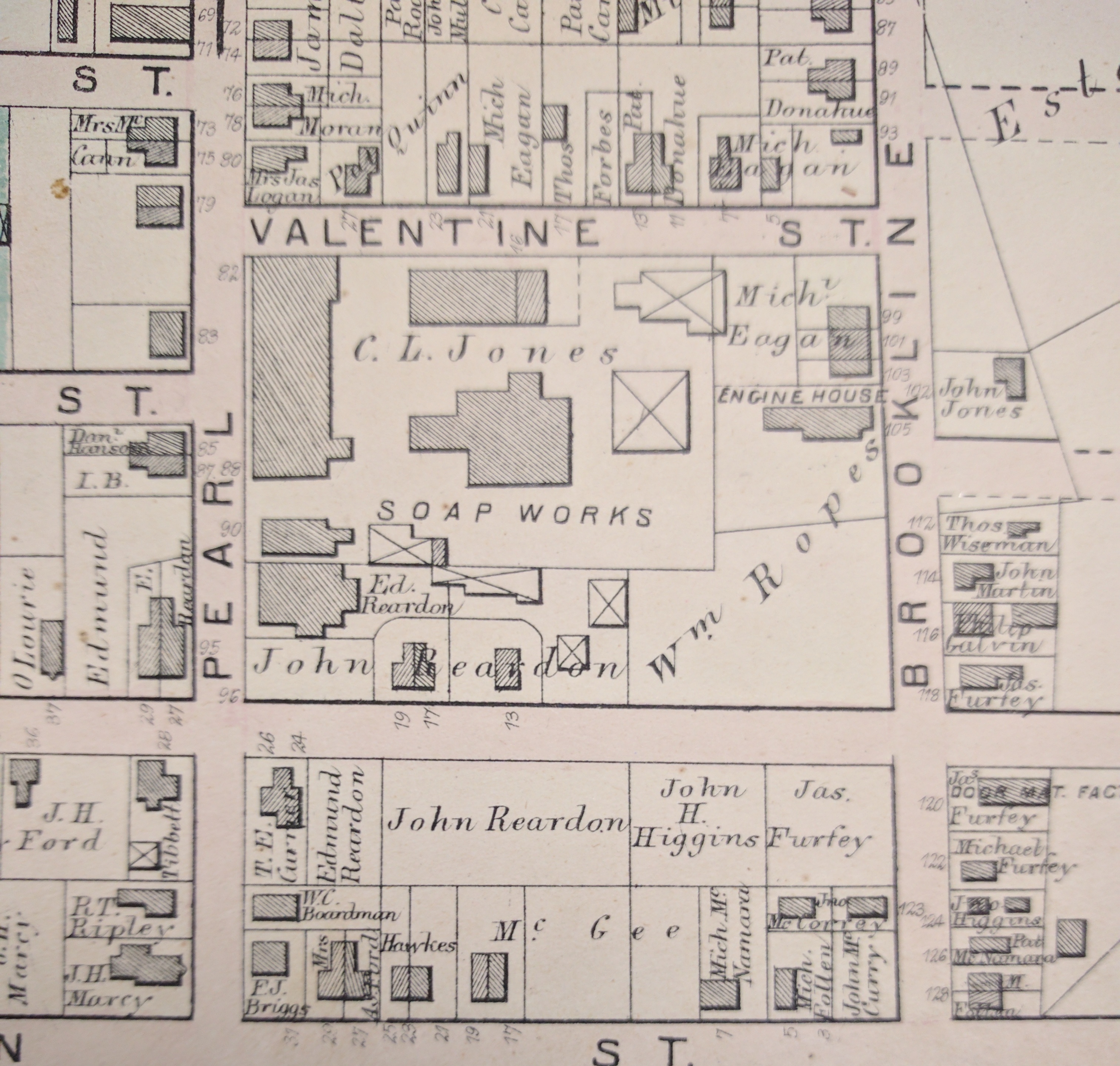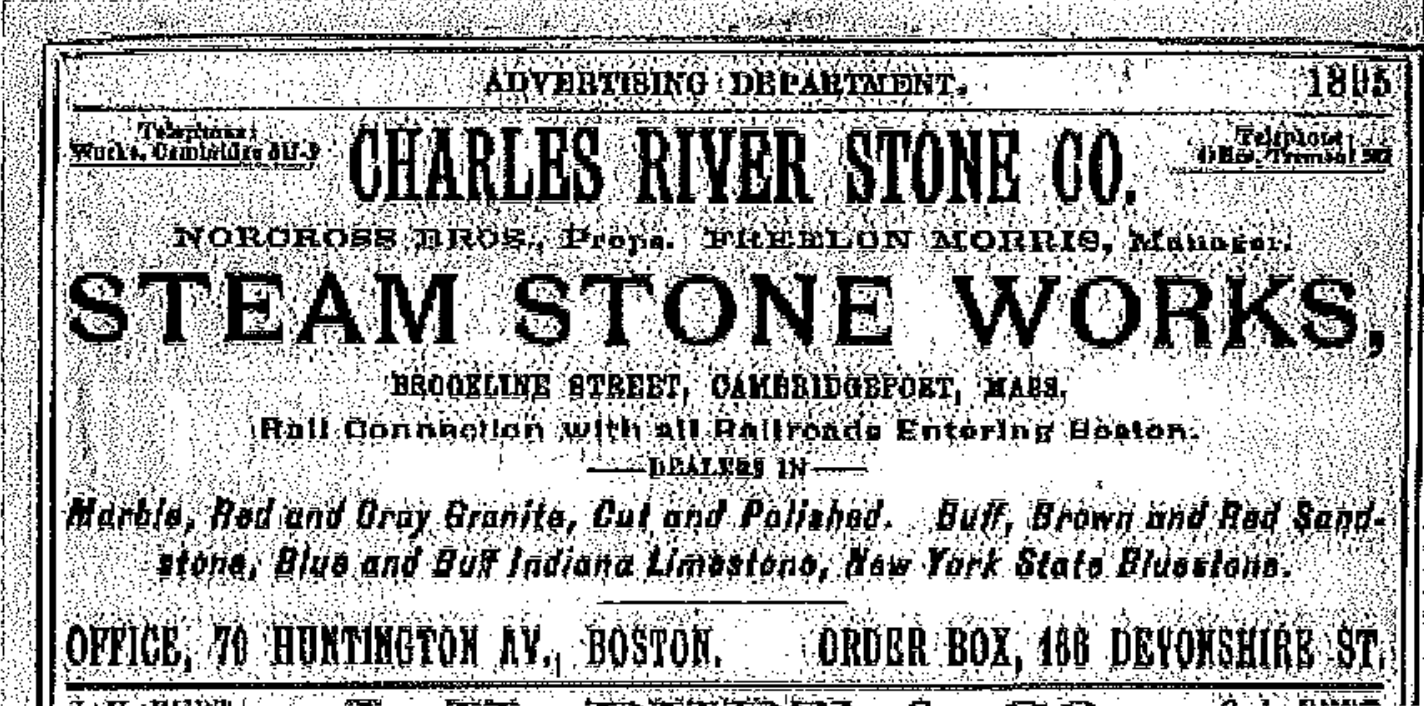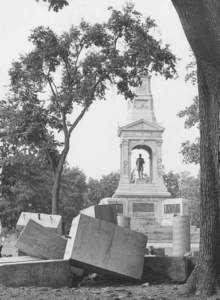The Makings of City Streets By Michael Kenney
As we lean into this year’s theme of “What Does Cambridge Make?”, a look at street names reveals a product–filled past.
Porter Square was Union Square until 1899, when it was renamed in honor of Zachariah B. Porter, the proprietor of Porter’s Hotel; many claim he lent his name to the specialty of the house, the Porterhouse steak. Porter’s Hotel was demolished in 1909, but the new Porter Square Hotel, a 65– room boutique, opened last year on the corner of Mass. Ave. and Porter Road. Porter Circle and Porter Park are nearby.

Valentine Soap Works, founded by Charles Valentine in 1828, became the C. L. Jones Co. Bromley Map, 1873, Cambridge Historical Commission
Tucked in next to the J. P. Squire meatpacking plant on East Cambridge’s Gore Street a century ago was Bacon Court, a short dead–end. Was it named in reference to a product of the nearby factory, or could it have been because a Mary Bacon lived there? Either way, like the Squire plant itself—destroyed in a grease– and fat–fueled fire in 1963— it is long gone. But the name lingers on, appearing on Google Maps and seeming to underlie a footpath along the east side of Gold Star Mothers Park on Gore Street.
One of the newest product–commemorating streets is Glassworks Avenue in the North Point area, developed in 2013. It commemorates the New England Glass Company, which flourished from 1814 to 1921 on nearby Bridge Street (now the McGrath Highway). Leighton Street, another new North Point street, honors Thomas Leighton, an English glass expert who was recruited in 1826 to become superintendent of the glassworks (despite there being a law in England forbidding glass workers to leave for America). Six of his seven sons became glass workers, including William, who invented lime glass, a process that allowed for high quality at a low cost.
Also long gone is Brewery Street, off Broadway. Although street historian Lewis Hastings* writes that “no brewery is known to have operated there,” its very name so bothered Temperance activists of the day that it was renamed Burleigh Street in 1897. Also gone is Distillhouse Street, off Cambridge Street near Willow Street. It led into the D. R. Shortwell Distillery, later the Great White Spirit Company, but was closed in 1927 at the height of Prohibition.

Advertisement in the 1895 Boston City Directory for the Charles River Stone Co. Cambridge Historical Commission
Though it now runs past the walls of academia in Harvard Square, Mill Street, leading from DeWolfe Street to Holyoke Street, was the site of a planing mill built by Thomas Stearns and Solomon Sargent in 1860, and demolished in 1890.
Granite Street recalls the Charles River Stone Co., which in its 19th–century heyday furnished granite for the Boston Public Library, Trinity Church, and the Shaw Memorial opposite the State House. At that time, the river was navigable to the company’s location near the old Ford Motor plant on Memorial Drive.
Camelia, Magnolia, and Myrtle avenues now run near Youville Hospital and through its surrounding neighborhoods. They once were the site of extensive 19th–century nurseries built by the horticulturist and seed merchant Charles Mason Hovey, who is commemorated by Hovey Avenue.
And while there is no Soap Street, soapmaking was a major industry in Cambridgeport. Recalling that is Valentine Street, named for Charles Valentine, who established a soapmaking factory at the corner of what is now Valentine and Pearl streets in 1828. By the 1880s it was producing 10 million pounds of soap a year. Just a few blocks away is Cottage Street, named for the soap–makers’ cottages built there in the 1840s. Many of them still stand.
*Lewis Hastings was the longtime city engineer (1889-1932) who compiled histories of all the streets in Cambridge, going back to the original records for the early streets and getting information from developers for the streets they developed.






